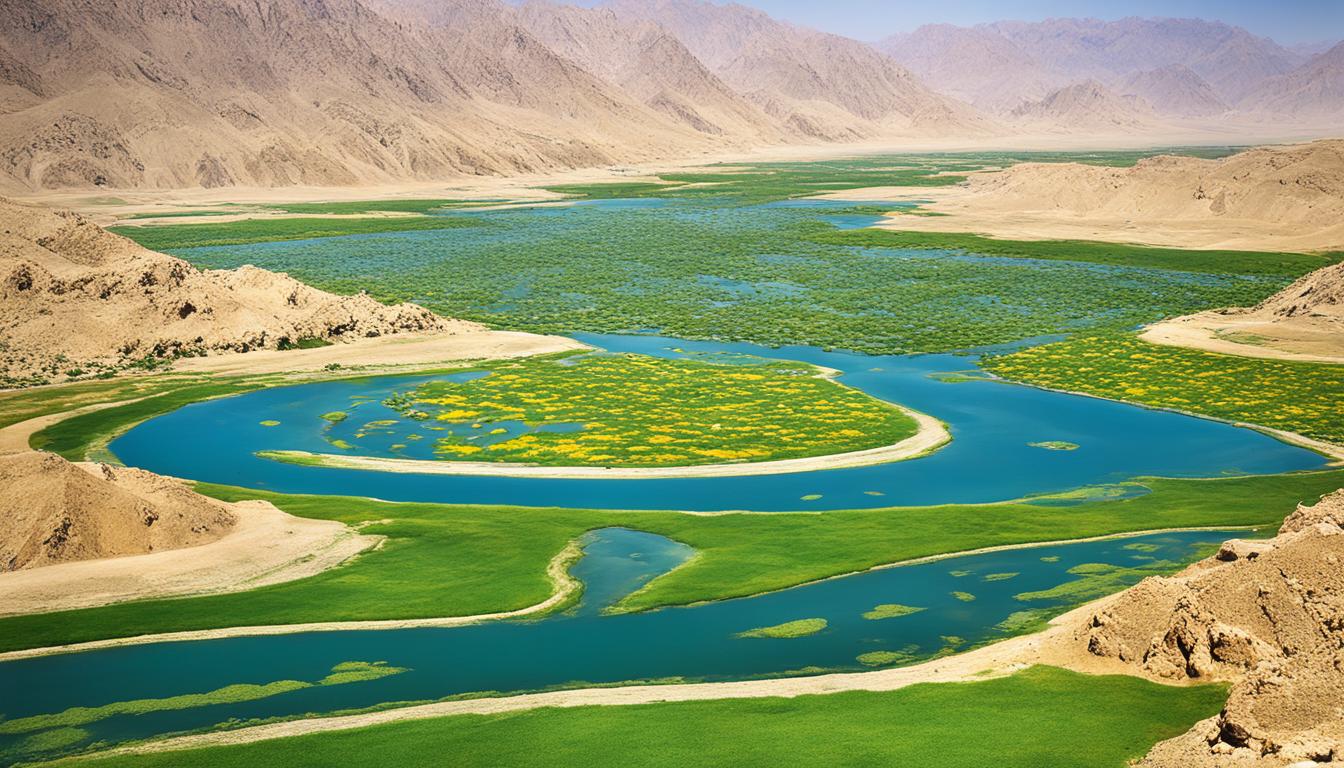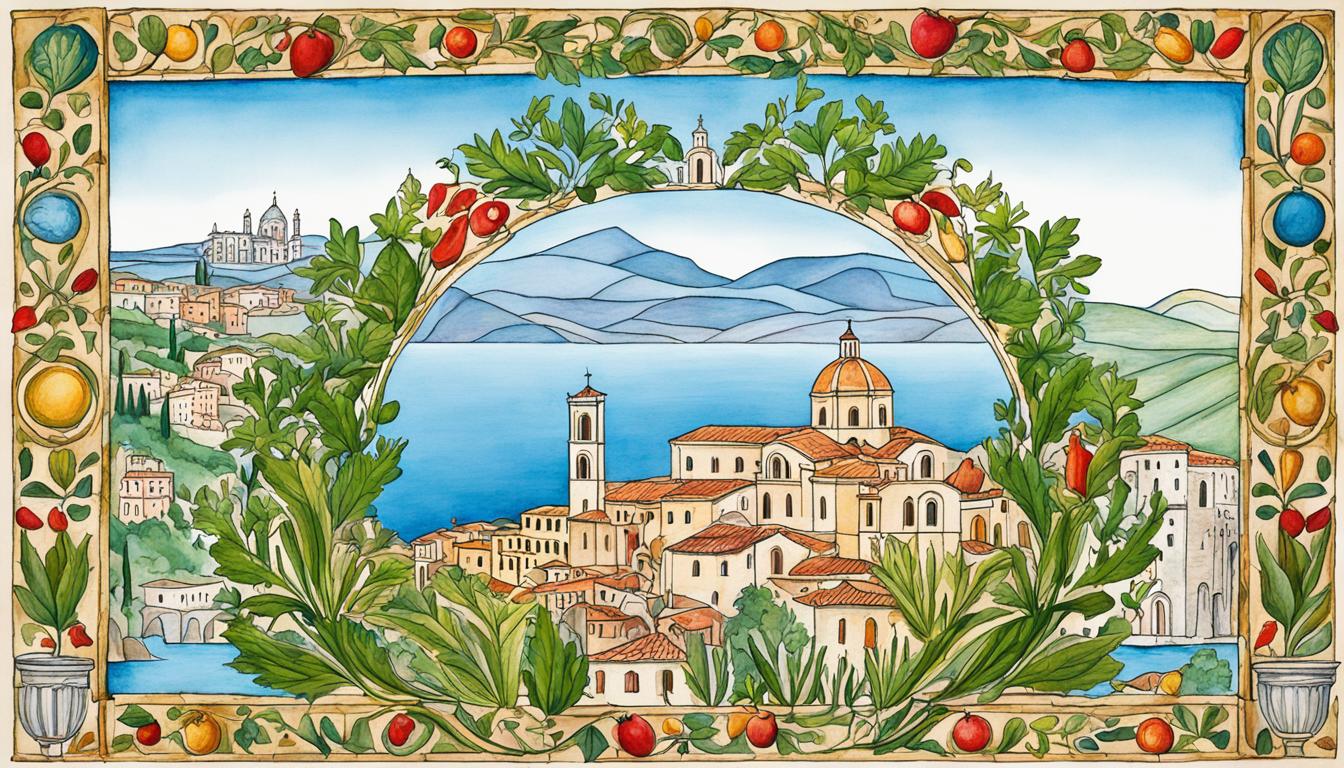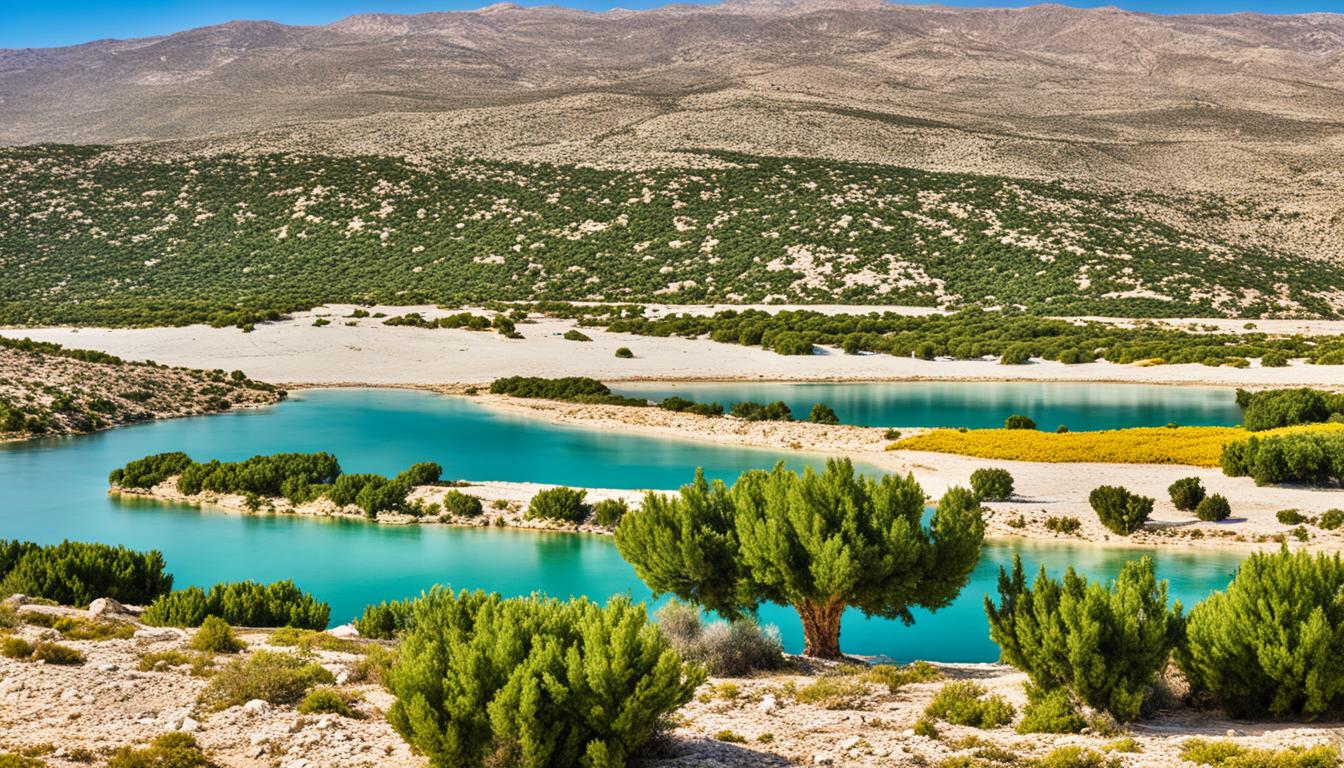Israel Sacred Natural Sites and Biodiversity
Did you know that Israel is home to numerous holy sites that also contribute to the preservation of its natural heritage? These sacred natural sites (SNS) not only hold immense spiritual significance but also serve as hotspots of biodiversity. The intersection of religion, conservation, and cultural heritage in Israel’s SNS is a fascinating subject that attracts attention from various fields and stakeholders. Let’s delve into the world of sacred natural sites and explore the intricate relationship between spirituality, biodiversity, and conservation in Israel.
Key Takeaways:
- Israel’s sacred natural sites combine spirituality, biodiversity, and conservation efforts.
- These sites hold immense cultural, historical, and ecological significance.
- Conservation involves collaboration with indigenous communities, international partners, and scientific research.
- Challenges such as urban development and climate change threaten the sustainability of these sites.
- Efforts are being made to raise awareness and promote education about the importance of sacred natural sites in Israel.
Importance of Sacred Natural Sites
Sacred natural sites in Israel hold significant importance due to their unique biodiversity. These sites serve as eco-spirituality locations where people connect with nature on a spiritual level. They are also considered religious ecology sites, where the intersection of religion and ecology is embraced. The presence of these sites contributes to the overall conservation and protection of natural heritage in Israel.
These sacred natural sites in Israel are home to a diverse range of flora and fauna, including rare and endangered species. The unique biodiversity found within these sites is a result of their undisturbed natural ecosystems and the traditional conservation practices of indigenous communities. These sites act as sanctuaries for various plants and animals, providing them with a safe haven for breeding and survival.
The presence of unique biodiversity in these sacred natural sites highlights their ecological significance and the need for their protection and preservation.
What sets these sites apart is their dual role as spiritual and ecological havens. Eco-spirituality locations allow individuals to develop a deep connection with nature, fostering a sense of reverence and responsibility towards the environment. At religious ecology sites, there is a recognition of the interconnectedness between human spirituality and the natural world.
The importance of these sites extends beyond their ecological and spiritual value. They also hold cultural and historical significance, acting as sacred pilgrimage sites for various religious communities. These sites attract visitors from around the world who seek to experience the spiritual and natural beauty found within them.
<!–
–>
Conservation Efforts in Sacred Natural Sites
In Israel, there is a strong commitment to the protection and conservation of sacred natural sites. Environmental protection agencies in the country actively work towards nature conservation in these sites, ensuring the preservation of their unique biodiversity. Through the implementation of landscape management strategies, a balance is sought between the spiritual significance of these sites and their ecological value.
Israeli environmental protection agencies play a vital role in safeguarding the natural heritage of sacred sites. They employ various conservation methods and practices to mitigate threats and promote sustainable land use. These efforts are aimed at maintaining the ecological balance and enhancing the overall landscape management.
By integrating Israeli environmental protection measures into the management of sacred natural sites, the country is able to preserve and protect its natural treasures. Nature conservation in Israel is a priority, and it is reflected in the dedication and efforts put forth towards the preservation of these sites.
It is through landscape management that the unique biodiversity found in sacred natural sites is safeguarded. By implementing effective management strategies, Israel ensures the long-term sustainability of these sites and their ecological integrity. This approach takes into account the spiritual significance of the sites while prioritizing the conservation of their natural ecosystems.
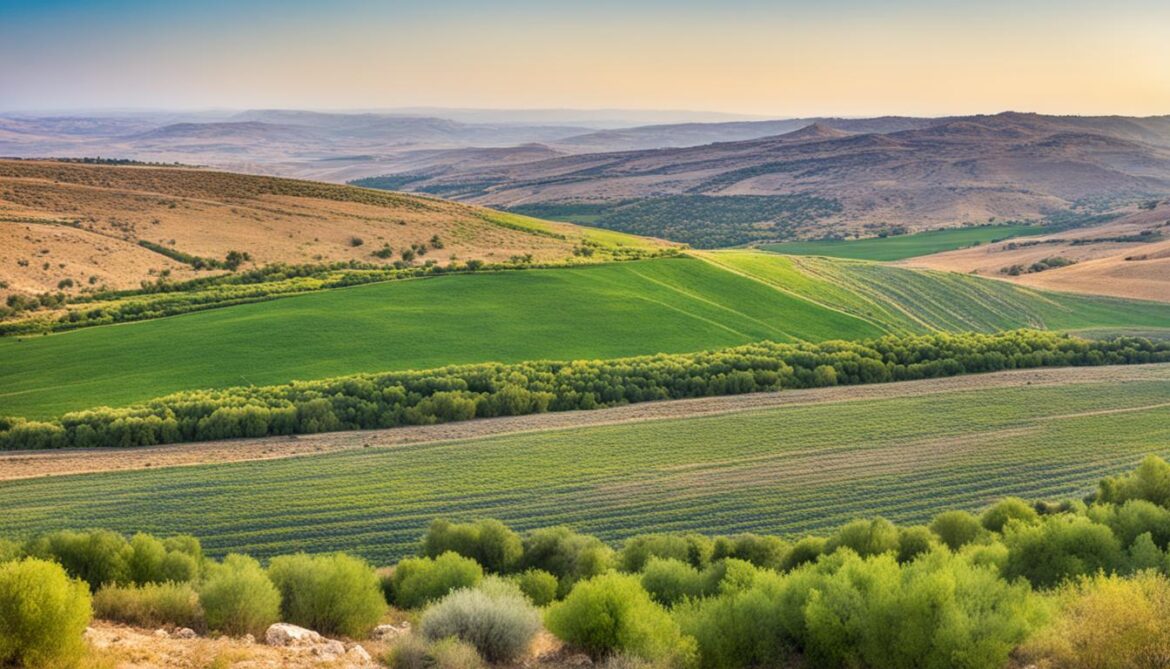
The image above captures the essence of landscape management and its importance in preserving the diverse ecological landscapes of sacred natural sites in Israel.
Indigenous and Community Involvement
Indigenous peoples and local communities in Israel play a pivotal role in the conservation and preservation of sacred natural sites. These areas, known as Indigenous and community conserved areas (ICCAs), are often managed by indigenous communities who possess deep-rooted connections to the land. Through their traditional ecological knowledge and practices, they inform the conservation strategies implemented in these areas.
The inclusion of local communities in the management and preservation of these sacred sites extends beyond ICCAs to protected areas throughout Israel. Their involvement enhances the effectiveness of conservation efforts by harnessing their intimate understanding of the ecological dynamics and cultural significance of these sites.
By integrating traditional ecological knowledge, these communities contribute to the sustainable management of these areas, ensuring the long-term preservation of both the natural and cultural heritage they hold. The collaboration between indigenous peoples, local communities, and conservation initiatives fosters a holistic approach to safeguarding sacred natural sites in Israel.
Indigenous and Community Conserved Areas (ICCAs)
Indigenous and community conserved areas (ICCAs) are vital spaces managed by indigenous peoples and local communities. These areas represent a fusion of conservation efforts, traditional practices, and spiritual connections to the land. ICCAs contribute to the overall preservation of biodiversity, ecosystem services, and cultural diversity.
“ICCAs are essential for the protection of sacred natural sites in Israel. They serve as bridges between traditional knowledge and scientific conservation strategies, ensuring the sustainable management of these invaluable areas.” – Dr. Sarah Cohen, Conservation Biologist
Through their stewardship, ICCAs empower indigenous communities and local stakeholders by recognizing their invaluable contributions to conservation and providing a platform for their voices and traditional knowledge.
| Benefits of Indigenous and Community Involvement | Protected Areas in Israel |
|---|---|
|
|
The collaboration between indigenous peoples, local communities, and protected areas in Israel paves the way for inclusive and culturally sensitive conservation practices. By acknowledging the traditional ecological knowledge and practices of these communities, a harmonious balance can be achieved between the preservation of sacred natural sites and the protection of biodiversity.
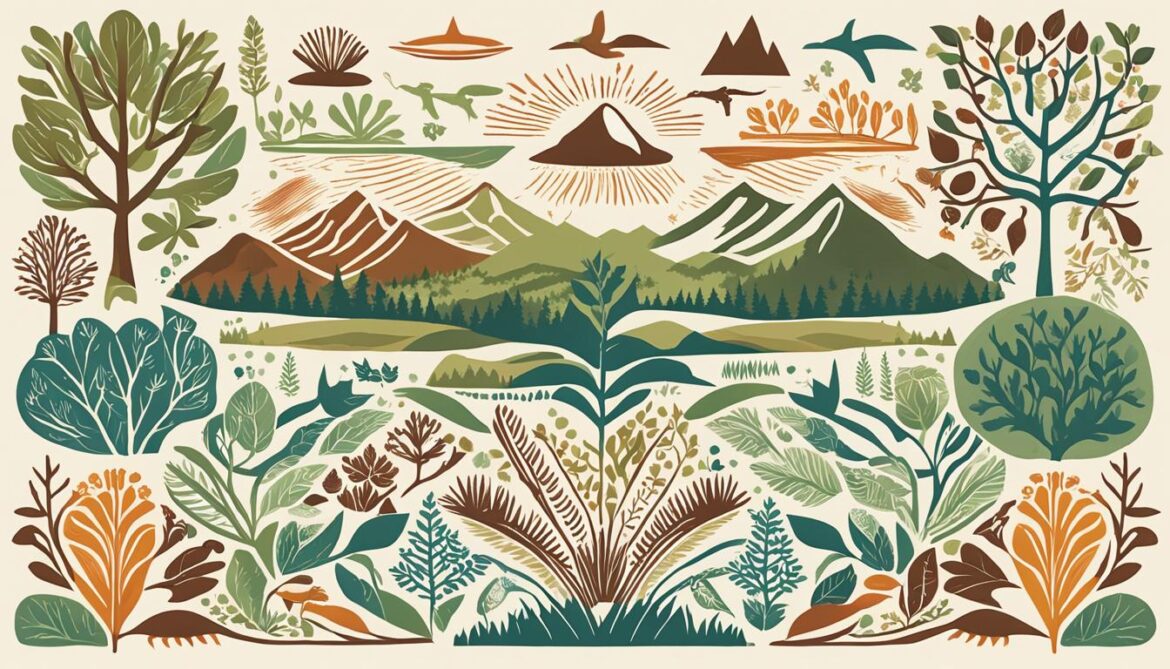
Indigenous and community involvement in the conservation of sacred natural sites and protected areas in Israel exemplifies the significance of integrating traditional ecological knowledge into contemporary conservation strategies. This collaborative approach ensures the sustainable preservation of these invaluable areas for generations to come.
Cultural and Historical Significance
The sacred natural sites in Israel are not only renowned for their ecological importance but also hold immense cultural and historical significance. These sites are considered historical heritage sites, serving as a testament to the rich cultural heritage of the region. They are integral to the preservation of Israel’s historical legacy, providing valuable insights into the traditions, customs, and religious practices of ancient civilizations.
Efforts are consistently made to protect and preserve the cultural heritage of these sacred sites. Various cultural preservation initiatives are implemented to safeguard the historical artifacts, structures, and archaeological remains found within these sites. These preservation efforts aim to maintain the authenticity and integrity of the cultural heritage, ensuring future generations can continue to appreciate and learn from these remarkable sites.
One notable aspect of the cultural significance of sacred natural sites in Israel is their association with religious pilgrimage sites. These sites hold immense importance for people of various faiths, attracting pilgrims from around the world. Pilgrimages to these sacred sites allow individuals to connect deeply with their religious beliefs and experience a profound spiritual journey.
“These sacred natural sites are not just physical places; they are living embodiments of our religious, cultural, and historical heritage. They provide a sense of belonging and spirituality that cannot be replicated elsewhere.” – Rabbi David Cohen
The Western Wall – A Symbol of Faith
One of the most iconic religious pilgrimage sites in Israel is the Western Wall, also known as the Wailing Wall. Located in Jerusalem’s Old City, the Western Wall is the last remaining structure of the Second Temple complex and holds significant religious importance for Jews worldwide. It serves as a place of prayer, reflection, and connection to Jewish history and traditions.

The Church of the Holy Sepulchre
The Church of the Holy Sepulchre, situated in the Christian Quarter of the Old City of Jerusalem, is another renowned religious pilgrimage site. It is believed to encompass the sites of Jesus’ crucifixion, burial, and resurrection, making it profoundly sacred for Christians. Pilgrims from different denominations visit this site to pay homage to their faith and partake in religious ceremonies.
Masada – A Testament to Jewish Resilience
Masada, a mountaintop fortress overlooking the Dead Sea, holds great historical and cultural significance for the Jewish community. It symbolizes Jewish resistance against oppression and serves as a reminder of the nation’s resilience. Pilgrims and visitors climb the challenging path to Masada to experience the breathtaking view and connect with the profound history it represents.
The Ancient City of Petra
Although located in present-day Jordan, the ancient city of Petra, just a short distance from the Israeli border, is considered a popular religious pilgrimage site for various religious and cultural groups. This magnificent UNESCO World Heritage Site attracts visitors from all over the world, who come to marvel at its unique architecture and immerse themselves in the rich history of the Nabatean civilization.
The Quest for Cultural Preservation
The preservation of these cultural and historical sacred sites remains a priority for the Israeli government and relevant organizations. Strict regulations and preservation initiatives are in place to ensure the sites’ protection from external threats, such as urban development and climate change.
“Preserving our cultural heritage is not just about protecting the physical sites; it is about safeguarding the stories, traditions, and wisdom that they hold. These sacred natural sites are gateways to our past, linking generations and bridging cultures.” – Dr. Sarah Cohen, Archaeologist
The cultural and historical significance of Israel’s sacred natural sites, coupled with their ecological importance, makes them truly unique and invaluable. Visitors from all walks of life are drawn to these sites, seeking a profound connection with their spirituality and a glimpse into the rich tapestry of human history.
Challenges and Threats
Conserving sacred natural sites in Israel is not without its challenges and threats. These sites, like any other conservation area, face risks that can impact the delicate balance of biodiversity and ecosystems. It is crucial to address these challenges in order to ensure the long-term sustainability of these sacred sites and their invaluable biodiversity.
Threats to Sacred Natural Sites
One of the primary threats to sacred natural sites in Israel is the impact of human activities. Tourism, for instance, can lead to over-visitation and the degradation of sensitive areas. It is important to find a balance between allowing visitors to experience the cultural and spiritual significance of these sites while preserving their ecological integrity.
Urban development and habitat destruction pose another significant threat to these sacred sites. As cities expand and infrastructural projects increase, there is an increasing risk of encroachment on the natural habitats within these sites. Protecting these areas from urbanization is crucial to maintain their unique biodiversity.
Moreover, the effects of climate change, such as rising temperatures and altered precipitation patterns, can have a detrimental impact on the delicate ecosystems within sacred natural sites. Changes in climate can disrupt the balance of species interactions and threaten the survival of vulnerable flora and fauna.
Conservation Challenges in Israel
Conservation efforts in Israel face several challenges that are unique to the region. The country’s diverse landscapes and cultural heritage present a complex conservation landscape.
One challenge is the need to strike a balance between the preservation of sacred natural sites and the growing demand for development and economic growth. Finding sustainable solutions that prioritize conservation while also meeting the needs of local communities and the broader population is a delicate task.
Another challenge is the limited resources available for conservation initiatives. Securing funding and implementing effective management strategies can be a constant struggle, especially for sacred natural sites that may not receive the same level of attention and support as more mainstream conservation projects.
Caring for sacred natural sites requires a multifaceted approach that integrates environmental, cultural, and social considerations. It is crucial to involve relevant stakeholders and communities in the decision-making processes and empower them to take an active role in the conservation and management of these sites.
Addressing these challenges requires a collaborative effort between government agencies, local communities, conservation organizations, and international partners. By working together, we can overcome these obstacles and ensure the protection of Israel’s sacred natural sites and their biodiversity for future generations.
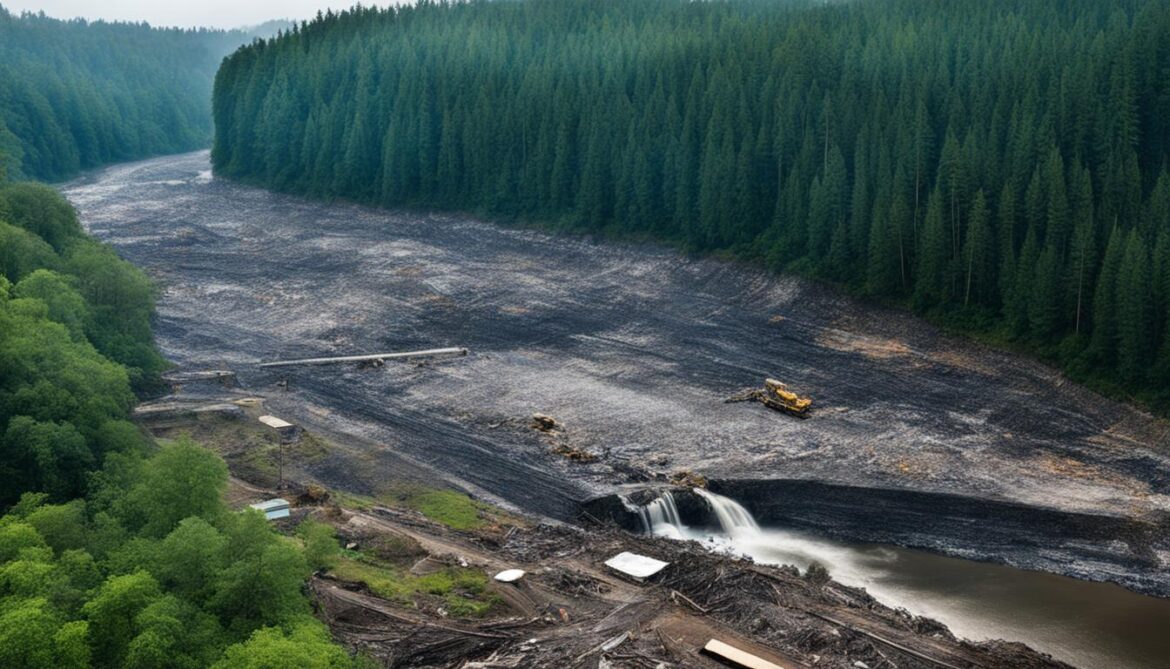
International Cooperation and Partnerships
Israel recognizes the importance of international collaboration on conservation and biodiversity preservation initiatives. By partnering with international organizations and other countries, Israel aims to strengthen its conservation efforts and share best practices in the field. Through these collaborations, countries can collectively enhance their biodiversity preservation strategies and work towards the protection of important natural and cultural heritage sites.
“Collaboration is key in achieving effective conservation outcomes. By joining forces with international partners, we can leverage diverse expertise and resources to address the global challenges of preserving sacred natural sites and their unique biodiversity.” – Dr. Sarah Cohen, Director of Conservation at Israel Nature and Parks Authority.
One such collaboration is the International Union for Conservation of Nature (IUCN) and its World Commission on Protected Areas (WCPA), which actively engages in enhancing the capacity and effectiveness of protected area management worldwide. Israeli conservation experts participate in various IUCN initiatives, contributing their knowledge and experiences to the global conservation community. These collaborations facilitate the exchange of ideas, scientific research, and innovative conservation approaches that benefit sacred natural sites and their surrounding landscapes.
Additionally, partnerships with neighboring countries in the region, such as Jordan and Palestine, foster cross-border cooperation on conservation efforts. The shared ecosystems and cultural heritage create an opportunity for synergy in biodiversity preservation. Joint projects and initiatives focus on the protection of transboundary natural sites, promoting collaborative management and sustainable development.
International Collaboration Success Stories
Several successful international collaboration projects have demonstrated the positive impacts of working together for conservation. One notable example is the collaboration between Israel and Greece in the preservation of sacred natural sites. Through joint research expeditions and knowledge sharing, both countries have been able to develop effective conservation strategies and management plans for their respective sites.
Another inspiring collaboration is the partnership between Israel and the United Nations Educational, Scientific and Cultural Organization (UNESCO). This collaboration has resulted in the recognition of several sacred natural sites in Israel as UNESCO World Heritage Sites. The international recognition has helped raise awareness about the value of these sites and has attracted increased support for their conservation.
Table: Examples of International Collaborative Projects
| Project | Collaborators | Objective |
|---|---|---|
| Transboundary Conservation of the Jordan River | Israel, Jordan, Palestine | To promote sustainable management and protection of the shared ecosystem and cultural heritage |
| Conservation of Mediterranean Sacred Natural Sites | Israel, Greece | To develop effective conservation strategies and management plans for sacred natural sites |
| Heritage Guardians | Israel, UNESCO | To secure international recognition of sacred natural sites as UNESCO World Heritage Sites |
These collaborative projects showcase the power of international cooperation in addressing the conservation challenges faced by sacred natural sites. By pooling resources, sharing knowledge, and working together, countries can make significant progress in the sustainable management and preservation of these precious natural and cultural assets.
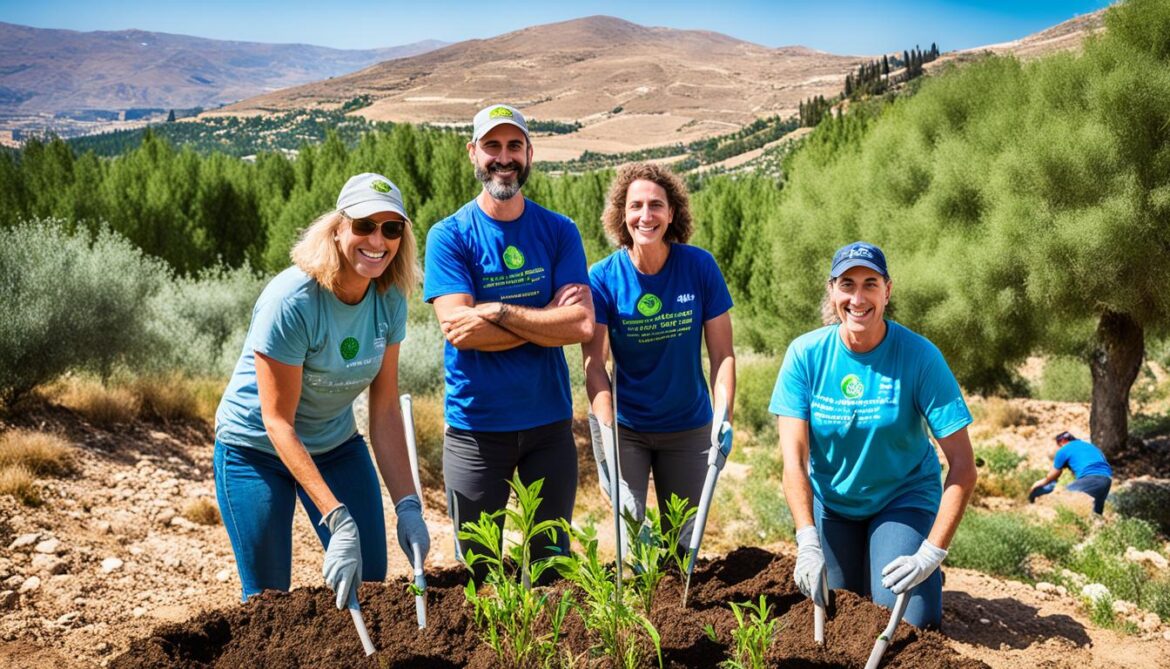
Research and Scientific Studies
Scientific research plays a crucial role in understanding the biodiversity and ecological dynamics of sacred natural sites in Israel. Through conservation science and academic studies, researchers contribute valuable knowledge to the management and preservation of these treasured sites. Ongoing research efforts aim to enhance conservation strategies, inform policy decisions, and improve our overall understanding of the relationship between sacred natural sites and biodiversity.
The Role of Scientific Research
Scientific research on Israeli sacred natural sites provides valuable insights into the diverse ecosystems and species that inhabit these areas. By collecting and analyzing data, researchers can identify patterns and trends, allowing for evidence-based conservation strategies. Academic studies also contribute to the documentation and documentation of cultural practices, historical significance, and the impact of human activities on these sites.
Conservation science and research help bridge the gap between the spiritual and the scientific, fostering a holistic approach to the management of sacred natural sites.
Enhancing Conservation Strategies
Scientific studies and research findings inform the development and implementation of effective conservation strategies. By understanding the ecological dynamics and unique biodiversity of sacred natural sites, conservationists can tailor interventions to mitigate threats and preserve critical habitats. This ensures the sustainability of these sites for future generations.
Informing Policy Decisions
Academic studies provide evidence-based insights that can shape policy decisions related to the conservation and management of sacred natural sites. Policymakers can rely on scientific research to establish guidelines, regulations, and frameworks that ensure the long-term protection and sustainable use of these sites. This integration of scientific knowledge and policy enhances the effectiveness of conservation efforts.
Advancing Our Understanding
Scientific research on Israeli sacred natural sites is an ongoing process that contributes to our overall understanding of the intricate relationships between biodiversity, spirituality, and culture. By continuously expanding our knowledge base, researchers can uncover new insights and discoveries that deepen our appreciation for these sites and their importance in both natural and cultural heritage conservation.
The Intersection of Science and Conservation
The integration of scientific research and conservation efforts is crucial for the long-term preservation of sacred natural sites. By combining academic studies with on-the-ground conservation practices, we can ensure the sustainable management of these sites and safeguard the invaluable biodiversity they contain.

Education and Awareness
Promoting environmental education in Israel is crucial for raising awareness about the importance of sacred natural sites and the conservation of biodiversity. Through various initiatives, such as educational programs and outreach campaigns, efforts are made to inform and engage local communities, tourists, and the general public.
Environmental education aims to highlight the value and significance of these sites in terms of their ecological, cultural, and spiritual contributions. By emphasizing the interconnectedness of nature and human well-being, these initiatives foster a sense of stewardship and responsibility among individuals and communities.
Importance of Environmental Education
Environmental education plays a vital role in promoting the long-term preservation of sacred natural sites. By increasing knowledge and understanding of these sites and their unique biodiversity, individuals are more likely to adopt sustainable practices and support conservation efforts.
“Education is the most powerful weapon which you can use to change the world.” – Nelson Mandela
Through environmental education, people develop a deeper appreciation for the intricate relationship between humans and the natural world. They become aware of the threats and challenges faced by sacred sites and are inspired to take action to protect and conserve them for future generations.
Initiatives and Partnerships
Various organizations, including governmental agencies, non-profit organizations, and educational institutions, collaborate to promote environmental education in Israel. These partnerships aim to develop comprehensive educational programs, materials, and workshops.
An example of such collaboration is the partnership between the Ministry of Education and environmental organizations. Together, they integrate environmental education topics, including the conservation of sacred natural sites, into school curricula.
Engaging the Community
Sacred natural sites are an integral part of local communities’ cultural and spiritual identities. Engaging the community in environmental education initiatives ensures their active participation and fosters a greater sense of ownership and responsibility.
Local community leaders, cultural organizations, and religious institutions play a crucial role in advocating for the conservation of sacred sites. By involving them in awareness campaigns and educational activities, their knowledge and perspectives are valued, contributing to a more comprehensive understanding of the significance of these sites.
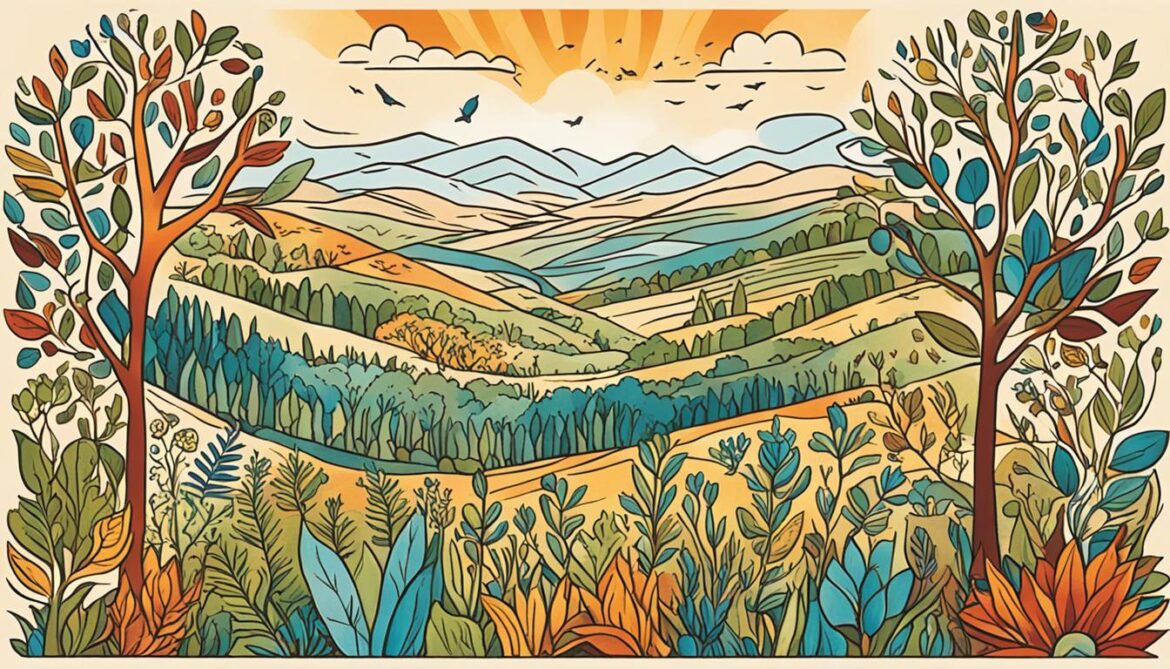
The Power of Awareness
Increased awareness about the importance of sacred natural sites and the need for their conservation can lead to positive change at both individual and societal levels. When people understand the ecological and cultural values of these sites, they are more likely to make sustainable choices in their daily lives.
Furthermore, raising awareness among policymakers and decision-makers can influence environmental policies and ensure that the conservation of sacred sites becomes a priority on the national agenda.
Conclusion
Israel’s conservation achievements in the sustainable management of its sacred natural sites and biodiversity are commendable. Through the active involvement of indigenous communities, collaborations with international partners, and extensive scientific research, significant progress has been made in preserving these biocultural hotspots. However, the future holds challenges that must be addressed to ensure the long-term protection of Israel’s natural heritage.
The ongoing threats of urban development and climate change pose risks to the delicate balance of these sacred natural sites and their unique biodiversity. To overcome these challenges, continued conservation efforts are essential. Adaptation and the implementation of innovative management strategies will be crucial in safeguarding the ecological and cultural significance of these sites.
By building upon the achievements of the past and actively engaging in collaborative initiatives, Israel can continue to make strides in the preservation of its sacred natural sites and their vital role in the conservation of biodiversity. As further challenges arise, it is imperative to prioritize sustainable practices and ensure the long-term viability of Israel’s natural heritage for future generations to appreciate and cherish.




